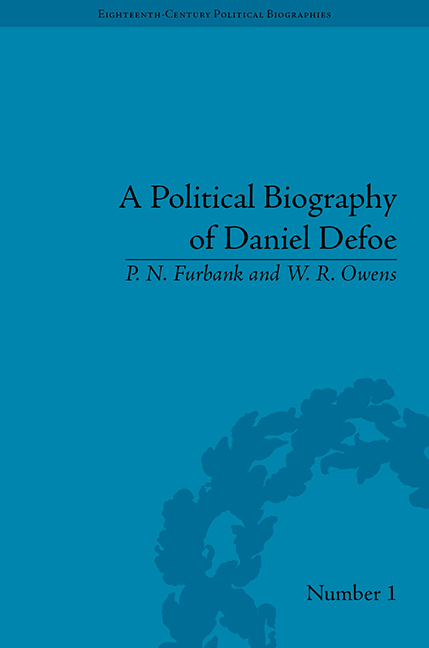Book contents
- Frontmatter
- CONTENTS
- The Authors
- Acknowledgements
- Abbreviations
- Introduction
- 1 Poetry, Pamphleteering and the Pillory
- 2 Defoe and the Dead King
- 3 The Author of the Review
- 4 Propagandist for the Union
- 5 ‘Maintaining a Counter Correspondence’
- 6 1710: The Fateful Step
- 7 Defoe and the Whig Split
- 8 The Return of the Prodigal
- Appendices A Three Recently-Discovered Letters from Defoe to Godolphin (1708)
- Appendices B The ‘Sir Andrew Politick’ Letter (25 October 1718)
- Appendices C Defoe's An Appeal to Honour and Justice (1715)
- Notes
- Index
6 - 1710: The Fateful Step
- Frontmatter
- CONTENTS
- The Authors
- Acknowledgements
- Abbreviations
- Introduction
- 1 Poetry, Pamphleteering and the Pillory
- 2 Defoe and the Dead King
- 3 The Author of the Review
- 4 Propagandist for the Union
- 5 ‘Maintaining a Counter Correspondence’
- 6 1710: The Fateful Step
- 7 Defoe and the Whig Split
- 8 The Return of the Prodigal
- Appendices A Three Recently-Discovered Letters from Defoe to Godolphin (1708)
- Appendices B The ‘Sir Andrew Politick’ Letter (25 October 1718)
- Appendices C Defoe's An Appeal to Honour and Justice (1715)
- Notes
- Index
Summary
Sacheverell's trial was not at first expected to be a large-scale affair, but public interest proved very great, and it soon became plain that there would not be room in the Lords’ chamber for all the spectators. Thus it was decided to stage it in Westminster Hall, and Sir Christopher Wren was commissioned to design the mise-en-scène and to arrange extra seating.
‘Nothing is so much talked of as he [Sacheverell] all over the Town’, wrote a fellow clergyman. ‘I suppose we shall have him very speedily the subject of de Foe's Review, in which he has formerly had the honour of being substantially abused. ’ He was right, and from late December onwards, for many weeks, Defoe filled the pages of the Review with the Sacheverell affair. He deliberately maintained his ‘moderate’ line in print. Indeed he began by arguing (22 December) that Sacheverell's sermon could be salutary. ‘For my Part, I really think, these Ecclesiastick Faggot-Sticks, when they are thus lighted at both Ends, do no Harm – But as they flame and stink about the Town, they awaken the People, and bring them to their Senses.’ But in any case, he said, it was unbefitting to kick a man when he was down. What called for punishment, he wrote (12 January 1710), was not so much Sacheverell as Sacheverell's crime.
- Type
- Chapter
- Information
- A Political Biography of Daniel Defoe , pp. 103 - 135Publisher: Pickering & ChattoFirst published in: 2014



